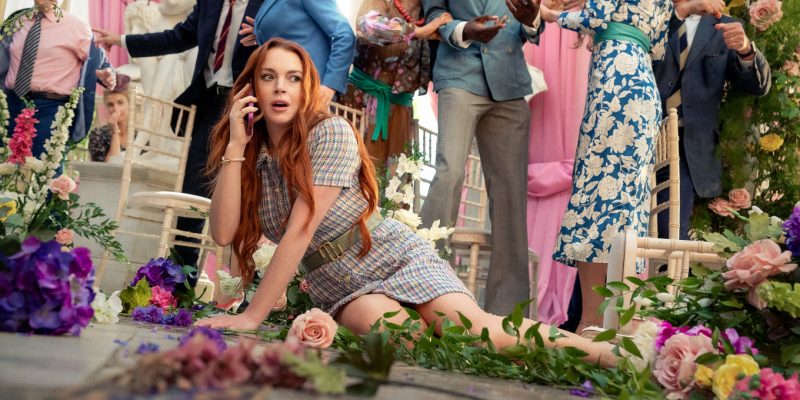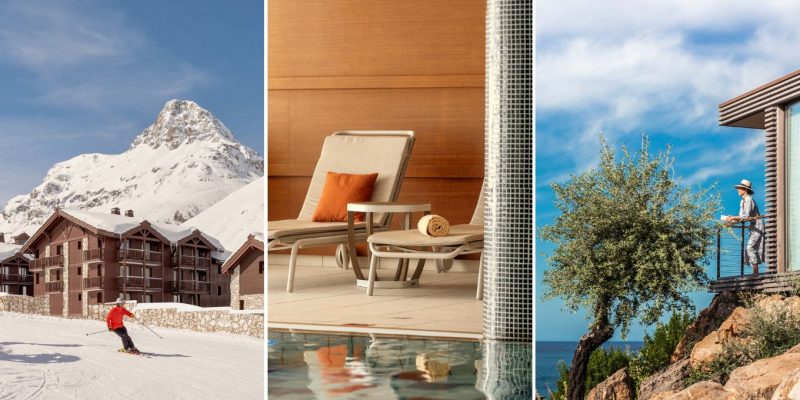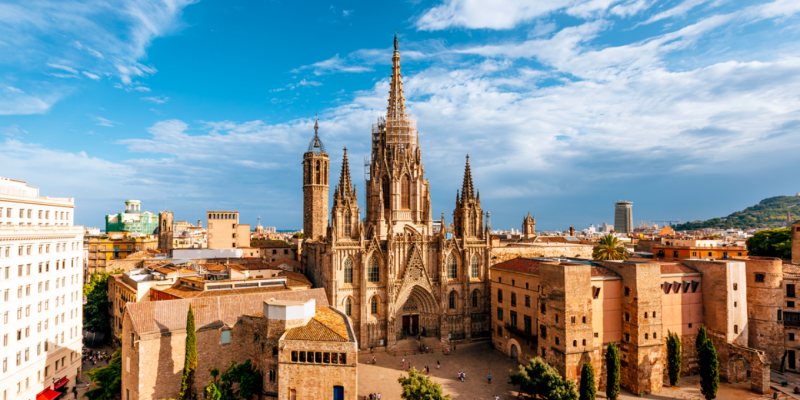Society
Sophie Grégoire Opens Up About Life, Love and Her New Book
With the upcoming release of her first book, which focuses on mental health, Sophie Grégoire Trudeau is turning the page to a brighter future.
by : Joanna Fox- Mar 15th, 2024
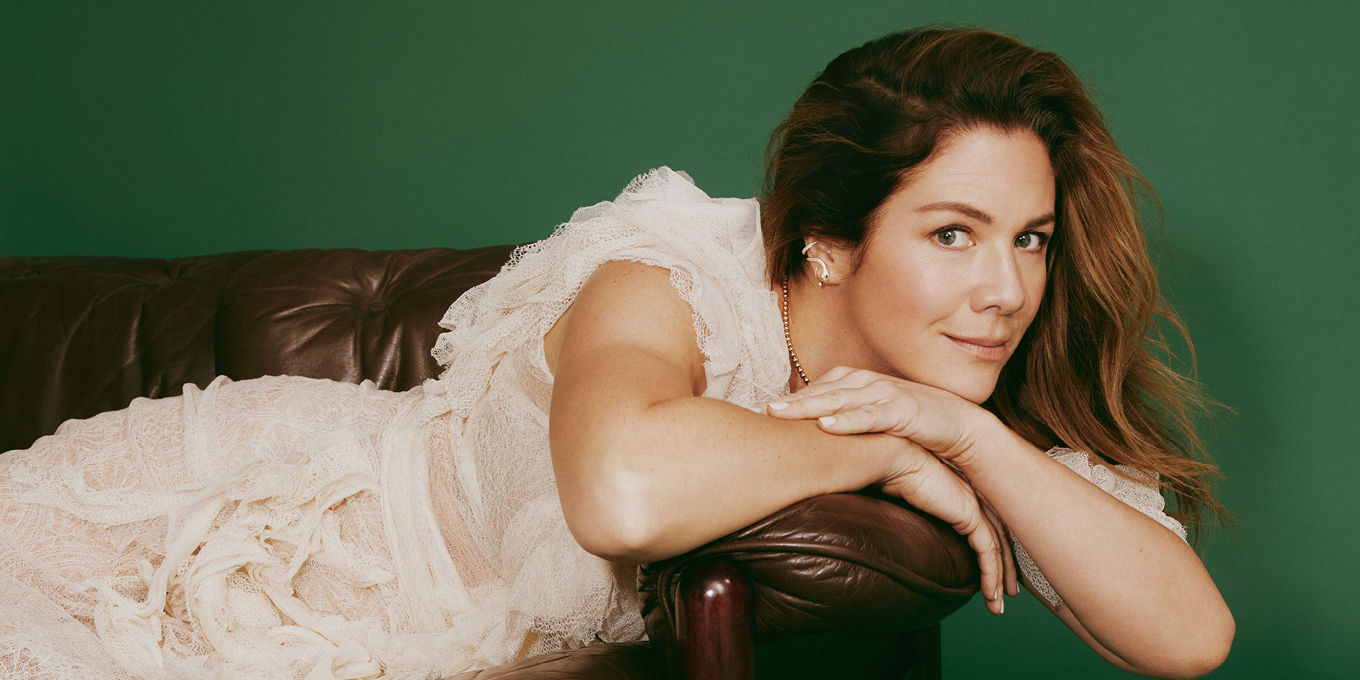
Marie H Rainville
When I walk into the lobby of the Le Germain Hotel in Ottawa to meet Sophie Grégoire Trudeau, I’m with my mom. She didn’t want me to drive alone from Montreal in the snowstorm-like conditions of deep Canadian winter, so she came along. When we arrive, Grégoire Trudeau is standing casually, wearing a belted black puffer coat, and as soon as she spots us, she rushes over, introduces herself and gives me a big hug. When I present my mom, her eyes well up with emotion. “You two remind me so much of me and my own mother,” she says. “She would do exactly the same thing.”
This is the first thing I learn about Grégoire Trudeau: She feels very deeply, and her emotions are right there on the surface, ready to spill over and envelop those around her. But it’s not an uncomfortable feeling; on the contrary, it’s very warm, sincere and compassionate. Grégoire Trudeau radiates an openness that immediately puts you at ease. She’s like that friend everyone shares their secrets with.
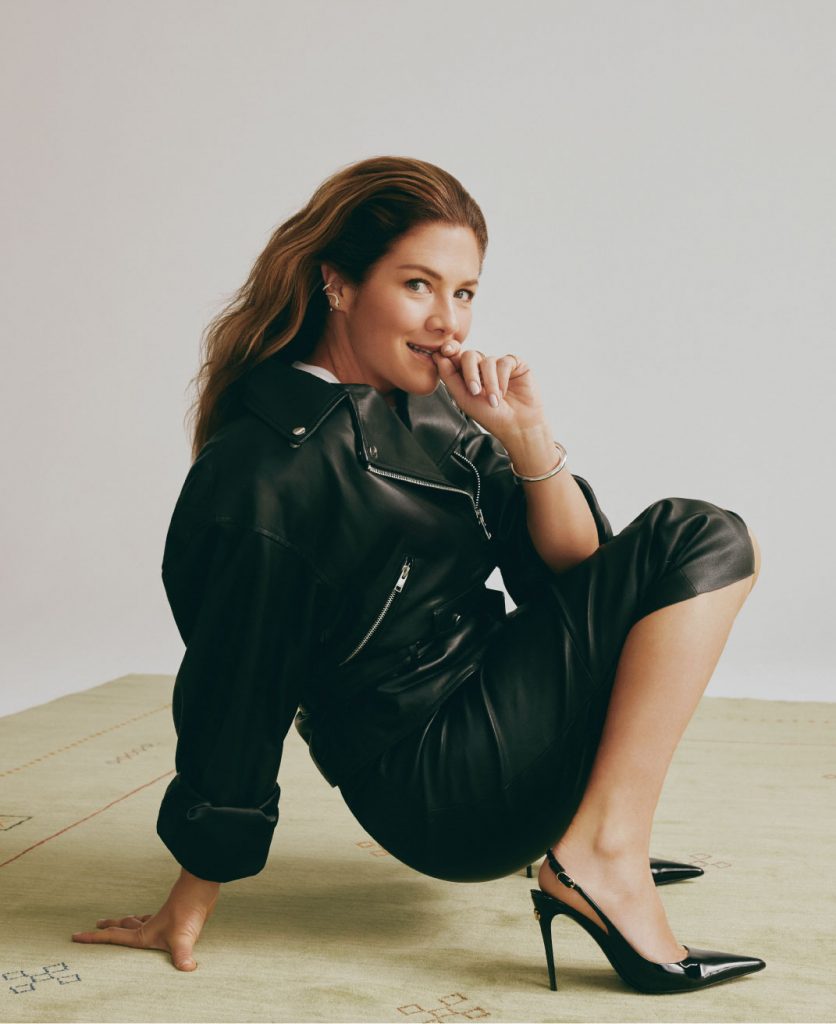 Marie H Rainville
Marie H RainvilleJacket and dress (Lamarque), T-shirt (stylist’s own), heels (Dolce & Gabbana), bangle (Jenny Bird) and rings and earrings (Grégoire Trudeau’s own)
And whether or not she has chosen to share, the events of the 48-year-old’s life have also been very out in the open. That includes her 18-year marriage to and recent separation from Canadian prime minister Justin Trudeau; the pair jointly announced the latter event on Instagram on August 2 last year. Though their declaration became international news that spurred speculation and endless articles examining what went wrong, the split is something Grégoire Trudeau has declined to discuss in the media up until this point.
What she has always been willing to speak about, though, is what she sees as her life’s purpose: mental-health advocacy, which she’s been dedicated to for decades. She was named the first National Volunteer for the Canadian Mental Health Association in 2022 and recently spoke about emotional literacy, equality and mental health at Forbes’ 30/50 Summit, which took place on International Women’s Day in Abu Dhabi, U.A.E. So the April 23 release of her book, Closer Together, which explores self-knowledge, acceptance and empowerment, is something that carries a lot of meaning for her.
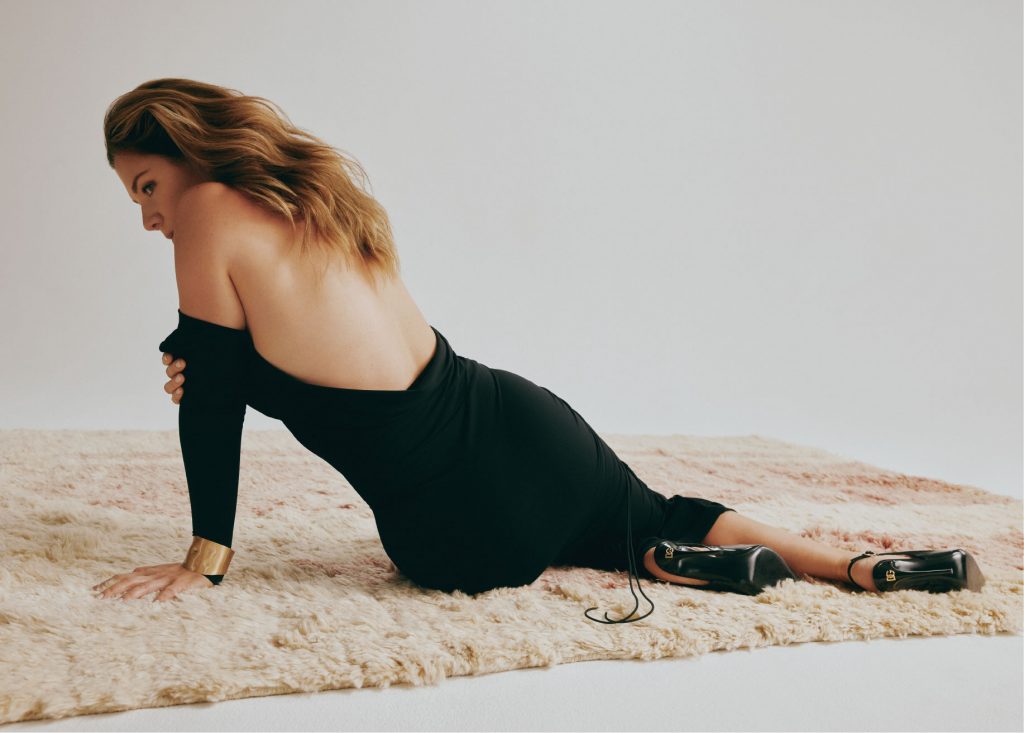 Marie H Rainville
Marie H RainvilleDress (Custom Tania Martins), heels (Dolce & Gabbana) and cuff (Vintage Rvzjy)
The book first dives into Grégoire Trudeau’s own life and experiences and then pulls focus to relate it all back to larger issues of mental health, trauma, relationships, parenting and more. “I want to connect,” says Grégoire Trudeau. “And I want to give [away some] of myself as well. So for me thisis not just a book—it’s a connector and [something] I want people to feel welcomed into.”
In order to do a deep dive into the bigger issues in the book, Grégoire Trudeau interviewed world-renowned experts, including Dr. Gabor Maté, a bestselling author and expert on a range of topics, including addiction, stress and childhood development; Gordon Neufeld, a world- renowned developmental psychologist and leading authority on child development; Liz Plank, an award-winning Canadian journalist, author and podcast host specializing in politics, gender issues and reproductive rights; John Grey, an American relationship counsellor and author; and Mary Simon, Canada’s first Indigenous Governor General.
Closer Together is full of information about how our bodies and brains work. It aims to demonstrate how we can better ourselves through honesty, understanding and self-awareness and also touches on the scientific advances and research surrounding mental health. What struck me most about it— aside from the time, effort and research Grégoire Trudeau must have put into it—was how it hints at all the work she has clearly done on herself. She might be talking the talk, but she is definitely also walking the walk. When I say this to her, she smiles. “I’m a forever student,” she says. “I’ll never stop [doing the work]. This is what I need to do, and I know it. It hurts—it’s a journey. I’ve had many, many tears on my yoga mat [in the process]. But that’s okay.”
Grégoire Trudeau sees the book as an extension of herself and that journey rather than a stand-alone project. It’s her next chapter. “With all the transformative aspects of my life, including my main core relationship— my marriage—I’ve been doing lots of work to better understand myself,” she says.
Part of that work was making the joint decision with Trudeau to end their marriage—and publicly announce it. That particular day in August is a sensitive subject that Grégoire Trudeau wants to keep close to her chest—and with good reason. One can only imagine the fear that comes with unleashing that kind of information in a public forum. “I imagined the worst-case scenario, I’ll tell you that,” she says carefully. “I had to. I didn’t want to be naive. But I also had to protect myself.” And when the news went out? “Let’s just say that we [all] stayed away from our phones. We were together as a family, [and] we held each other.”
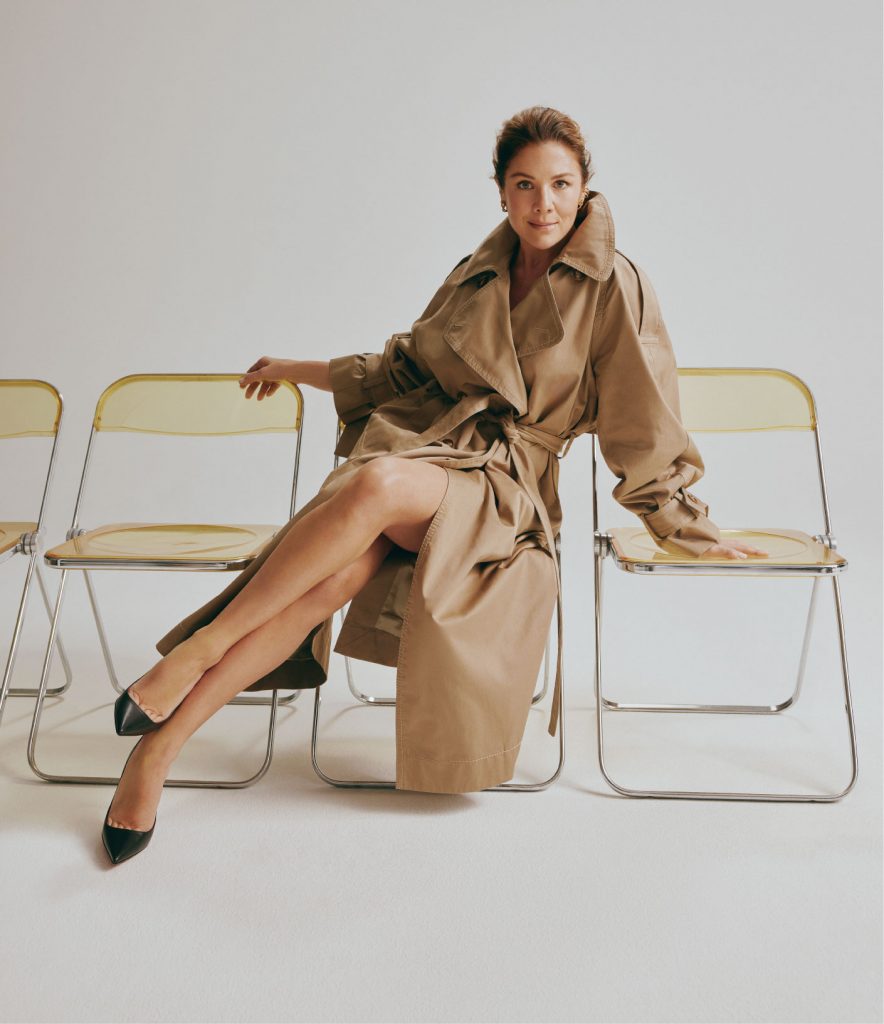 Marie H Rainville
Marie H RainvilleTrench Coat (Acne Studios at The Room at Hudson’s Bay), heels (Christian Louboutin) and earrings (Versace)
An only child, Grégoire Trudeau spent the first few years of her life in Sainte-Adèle, a small town in the Laurentian region of Quebec, about an hour north of Montreal. A true nature lover at heart, she was brought up embracing the outdoors and everything it had to offer. The woods were her playground; whispering to trees and jumping in lakes, she says, made her feel happy and safe. Her father, Jean Grégoire—whom she describes in the book as “the life of the party”—was a successful stockbroker, and he passed his appreciation of nature on to her; her mother, Estelle, was a nurse who worked mostly with psychiatric patients, and she surrounded her daughter with arts and culture. The small family moved to Montreal when Grégoire Trudeau was four, and although she became a city girl, she says she will always be a country one at heart.
Throughout her adolescence, she was a very active person who enjoyed movement and sports, but in her late teenage years, she developed an eating disorder—bulimia nervosa—which cast a shadow over her life until she got professional help. Despite being a very difficult period that extended into her 20s—navigating and managing this illness can feel like a full-time job—the experience is what made her want to be candid about serious issues, and it became the foundation for her future calling of advocating for mental health and wellness.
By the time she was in her late 20s, she had established a name for herself in the media industry and was working for various radio, news and entertainment outlets. It was during this period that she reconnected with Justin Trudeau, who was then studying engineering, when they co-hosted a charity event. Although she had known him growing up—in high school, she was friends with his brother Michel, who died in an avalanche in 1998—this time around, sparks flew.
In the book, Grégoire Trudeau reveals a bit about their romance and how on their first date in 2003, “the conversation turned to deeper topics, and he looked at me with such intense presence that I knew something special was going on. He said, ‘I’m thirty-one years old. I’ve been waiting for you for thirty-one years. Should we skip the girlfriend phase and start with fiancée?’” They got engaged in 2004, they married in 2005 and by the time Trudeau became prime minister of Canada (like his late father, Pierre Trudeau) in 2015, they had three children under the age of eight.
Unlike being married to a head of state in some countries, being the spouse of the Canadian prime minister doesn’t come with any official title, function or office. Regardless, many people still viewed Grégoire Trudeau as Canada’s First Lady, though she says she never considered herself as such. “I always remind myself that it was an unofficial position to be in, so it was kind of like uncertain waters to navigate,” she explains. “You do what you need to do; it’s one foot in front of the other. There was no defined role or responsibilities, so it was clear to me that I was going to continue on my path of [focusing on] mental health, eating disorders and self-esteem.”
The Trudeaus were a very young family when they made the move to Ottawa, something that came with its own set of challenges. “We adapted,” she says. “But adaptation always comes with blinders. And it’s a good thing they don’t tell you what’s coming [when you] go into politics with a young family because I don’t think a lot of people would still do it. I have empathy for people with young kids who do this—I know what cost it comes at.” And part of that cost is being 100 percent present. It was very important for Grégoire Trudeau to be both physically and emotionally there for her children during this time, and with her husband taking on such a huge, time-consuming role, she was fully committed to their safety and well-being. “I wanted to be there when they woke up in the morning; I wanted to be there when they came back from school. And I have done that up until now. I’m never going to regret that presence. For me, love is presence.”
 Marie H Rainville
Marie H RainvilleDress and earrings (Versace)
Love is a very important subject for the author. She dedicates a whole chapter of her book to love, relationships, how to understand one another and how to be vulnerable. That’s why her and Trudeau’s announcement was such a loaded decision. I feel her energy shift when I delicately ask her what it was like going through the separation. “Hard,” she says as if she’s trying to swallow the word. “[I had to] face the truth [and] choose authenticity over attachment. I’m a family woman—family is everything to me [because] I’m an only child, so the thought of breaking that mould or transforming that mould… Even the words we use to describe relationships—it’s either success [and you] stay together or failure [and you] go on different paths. We really need to develop a new vocabulary for human beings as we transform on our own paths.”
Before she could finally accept that she needed to go her own way, Grégoire Trudeau had to fully grasp that whatever she did would be heart-wrenching and drastically impact her family. “[I had to] sit with myself [and] say ‘Okay, you need to make decisions here. And all of them will cost you. Which one [do you choose]?’ So [it was] very difficult.” Being a prominent Canadian figure, she was also acutely aware of how those in the public eye are judged and dissected in the media—and on social media—and how something like this would no doubt become headline news and political fodder. “I had to put aside the world’s perception [of me] and ask myself ‘If you push that away, who is left? Who is that person?’” she says. “‘How do I want to live from the inside? How do I want to love? How do I want to give?’ And I got my answers. Were they easy to sit with? No. Are they filled with integrity? Yes. Are there days when I ask myself ‘What have I done?’ Yes. Deep inside, do I feel integrity and congruence? Yes. So I sit with all of it. And it’s chaotic, and it’s a mess, but it’s also loving, compassionate and tender.”
“I [had to] sit with myself [and] say ‘Okay, you need to make decisions here. And all of them will cost you. Which one [do you choose]?”
Now in a new phase, the former couple understand each other a lot better, but they also did a tremendous amount of work to get to that point. “You do develop more empathy,” says Grégoire Trudeau of forming a different type of relationship with an ex-partner and co-parent. “And that doesn’t mean it hurts less, but you take things less personally because you understand human functioning better.” Most importantly, though, they still laugh together a lot. “And we will for a very long time,” she says with a smile.
Amid the countless clickbait-y pieces about the former couple’s romance and speculation surrounding their split, what has surprised Grégoire Trudeau the most is the amount of sympathy and warmth she received—and continues to receive—from Canadians. Total strangers have stopped her on the street to tell her they could relate to the gravity of her decision. “I feel people’s support, and I feel their connection,” she says. “I don’t want to jinx it, but in [my] 12 or so years of [experience in] politics, I don’t remember a moment when I received hatred or aggression from anybody. Zero. It never happened.”
And considering how politics—and the way people speak to and regard one another—have changed, that’s a relief to hear. “When you look at the bullying in politics these days, [things are] very different from how they were 10, 15, 20 years ago,” says Grégoire Trudeau. “And it has to be addressed. I think it needs to be taken seriously. It’s a reflection [of us having] lost [the ability to be] discerning about our own discourse. Sometimes people don’t want to leap outside of what they know because it’s too scary, but a fixed mindset is a dangerous one. And that’s dangerous for democracy because if the free press is in danger, democracy is in danger—the truth is in danger.”
 Marie H Rainville
Marie H RainvilleBlazer, vest and trousers (Smythe), heels (Versace), and earrings (Grégoire Trudeau’s Own)
For Grégoire Trudeau, our country’s mental-health crisis is always top of mind. And, she says, it all starts with education, followed by access to tools and places for people to go to get help. “It’s [about] addressing the lack of education, the lack of awareness and the lack of self-agency and regulation tools we have,” she says. “And then, of course, [there’s] all the urgent mental-illness care that [needs to be done] and the structures that need to be better financed.” But it’s not all bleak news. Obvious close connections aside, she does feel that Canada has set a benchmark in this area (like, for example, a recent federal investment of nearly $5 million into research projects about mental-health standards and care for youth) and stresses that the momentum is continuing to build. “It’s incredible, and it really pushes the envelope,” says Grégoire Trudeau. “But it’s never enough and it’s not quick enough.”
With all the work she’s putting into championing youth self-esteem, gender equality, emotional literacy and physical activity, along with gearing up for an international book tour and being a full-time mom, it’s hard to imagine that Grégoire Trudeau—who is also a certified yoga instructor and practises meditation—has any time for her personal life or self-care. But when I meet her at the Le Germain and then see her again on-set for our cover shoot, she’s glowing from the inside out. She seems genuinely happy. And whether that has to do with the place she is at in her life, how much work it took her to get there, the work she continues to do to learn about herself and others or a rumoured new relationship with a dreamy-looking pediatric surgeon, at the end of the day, does it really matter? After all, maybe what Grégoire Trudeau deserves at this point is the space to continue on with the next chapter of her journey and the ability to keep some of her own secrets, well, secret.
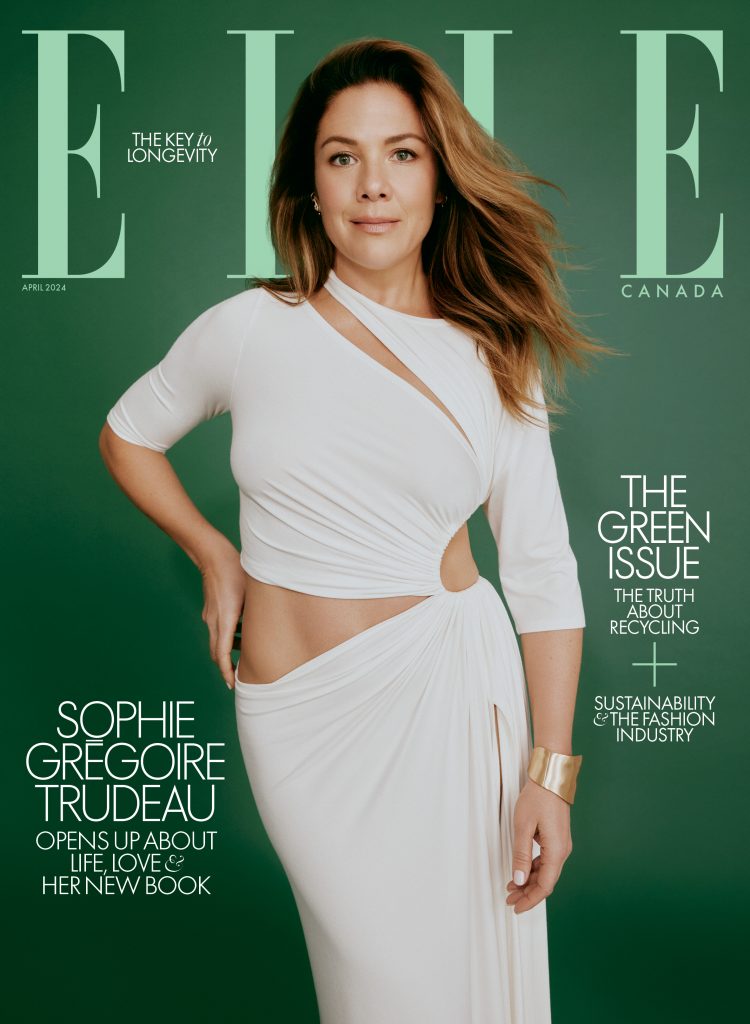 Marie H Rainville
Marie H RainvilleSophie Grégoire Trudeau is wearing a dress by Sid Neigum (at The Room at Hudson’s Bay), a gold cuff by RVZJY and the stylist’s own earrings.
The April 2023 issue of ELLE Canada will hit newsstands and Apple News+ on March 18, 2024.
Main image: Skirt and Top (Dior) and Earrings (Grégoire Trudeau’s Own)
Photographer Marie H Rainville
Creative director Samantha Puth
Stylist Nariman Janghorban
Hairstylist Emy Filteau (Oribe)
Makeup artist Geneviève Lenneville (DIOR Beauty)
Set designer Lisa Yang
Editorial producer Claudia Guy
Photographer’s assistants Axel Palomares and William Cole
Stylist’s assistants Edoh Agbetossou and Raph Simard
Set designer’s assistant Diane Kim-Lim
Fashion production assistants Laura Malisan and Estelle Gervais
Furniture Maison Singulier, Studio Façon and Séjour Furniture
Read more:
Read an Excerpt From Sophie Grégoire’s New Book, Closer Together
Sophie Grégoire is ELLE Canada’s April 2024 Cover Star!
It’s Ok To Be Not Ok! With Sophie Grégoire
Newsletter
Join our mailing list for the latest and biggest in fashion trends, beauty, culture and celebrity.
Read Next

Beauty
The Best Met Gala Beauty Looks Of All Time
From Taylor Swift's 'Bleachella' era to Rihanna's iconic 2011 braids, meet the best beauty moments in Met Gala history.
by : Katie Withington- Apr 26th, 2024

Culture
Benny Blanco Says He Fell in Love With Selena Gomez Without ‘Even Noticing’ It
Allow Benny Blanco to tell the straight-from-a-rom-com story of how he realized his feelings for his girlfriend and longtime friend.
by : Alyssa Bailey- Apr 26th, 2024

Culture
ELLE Escapes: Savannah
Where to go, stay, eat and drink in “the Hostess City of the South.”
by : ELLE- Apr 15th, 2024

